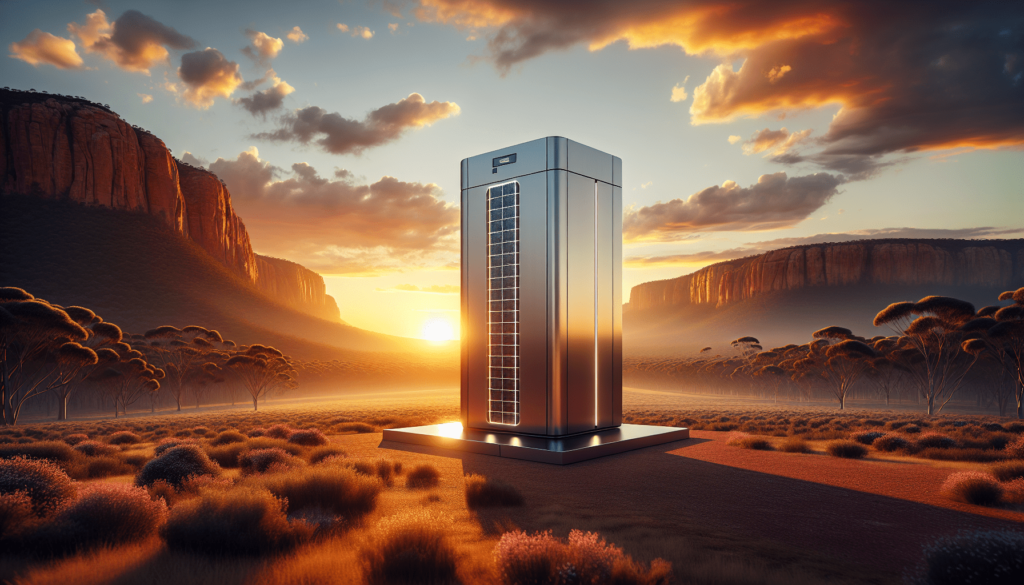Welcome to the exciting world of Tesla’s Big Battery in South Australia! This innovative project, brought to life by the brilliant minds at Tesla, has truly made a significant impact on renewable energy solutions in the region. The battery is not only providing efficient storage of renewable energy but also helping to stabilize the grid and improve reliability. This groundbreaking initiative is a prime example of how technology can be harnessed to create a more sustainable future. So, come along as we delve into the details of this impressive feat of engineering and its positive effects on the environment and energy sector. Have you ever wondered how Tesla’s Big Battery in South Australia works? Well, you’re in luck! In this article, we will dive into the details of this revolutionary energy storage system and explore its impact on the renewable energy sector.

The Beginnings of the Tesla Big Battery
Let’s start with the basics. The Tesla Big Battery, officially known as the Hornsdale Power Reserve, is located in South Australia and was built by Tesla in partnership with the South Australian government. It is a massive lithium-ion battery storage system designed to store excess energy generated from renewable sources like wind and solar power.
Back in 2016, South Australia experienced a statewide blackout that left thousands of residents without power. This event highlighted the need for a reliable energy storage solution to prevent future blackouts and stabilize the grid. Tesla stepped in to build the Hornsdale Power Reserve, which has since become a game-changer in the energy industry.
How Does the Tesla Big Battery Work?
So, how does this innovative energy storage system actually work? The Tesla Big Battery consists of thousands of lithium-ion battery cells housed in a series of interconnected containers. These containers are connected to both the South Australian power grid and the nearby Hornsdale Wind Farm.
When the wind farm generates excess energy that is not immediately needed, the surplus electricity is stored in the battery system. Conversely, when there is a high demand for electricity and the wind farm alone cannot meet it, the battery releases its stored energy back into the grid to stabilize supply.
Benefits of the Tesla Big Battery
Now that you understand how the Tesla Big Battery functions, let’s explore the benefits it brings to South Australia and the broader energy landscape.
Renewable Energy Integration
One of the primary benefits of the Tesla Big Battery is its ability to integrate renewable energy sources into the grid more effectively. By storing excess energy generated by wind and solar power, the battery helps to mitigate the intermittent nature of these renewable sources and ensure a more stable energy supply for consumers.
Grid Stability and Reliability
The Tesla Big Battery also plays a crucial role in stabilizing the grid and improving its overall reliability. By storing excess energy and releasing it when needed, the battery helps to balance supply and demand, reducing the risk of blackouts and ensuring a more resilient energy infrastructure.
Cost Savings
In addition to its operational benefits, the Tesla Big Battery also offers significant cost savings for South Australia. By storing excess energy during off-peak periods and releasing it during peak demand, the battery helps to reduce the need for expensive fossil fuel-powered peaker plants, ultimately lowering electricity costs for consumers.
Environmental Impact of the Tesla Big Battery
Beyond its operational and economic benefits, the Tesla Big Battery also has a positive environmental impact by supporting the transition to a cleaner and more sustainable energy future.
Carbon Emissions Reduction
One of the key advantages of the Tesla Big Battery is its ability to reduce carbon emissions by enabling greater utilization of renewable energy sources. By storing excess energy from wind and solar power, the battery helps to displace fossil fuel-generated electricity, resulting in lower greenhouse gas emissions and a cleaner energy mix.
Air Quality Improvement
In addition to reducing carbon emissions, the Tesla Big Battery also contributes to improved air quality by reducing the reliance on coal and gas-fired power plants. By enabling more renewable energy integration, the battery helps to decrease harmful pollutants like sulfur dioxide and nitrogen oxides, leading to cleaner air and a healthier environment for all.
Future Prospects for Energy Storage
As the demand for renewable energy continues to grow, the role of energy storage systems like the Tesla Big Battery will become increasingly vital in ensuring a reliable and sustainable energy supply.
Technological Advancements
With ongoing advancements in battery technology and energy storage systems, the future looks promising for large-scale projects like the Tesla Big Battery. Improvements in battery efficiency, capacity, and cost will make these storage solutions more accessible and widespread, further accelerating the transition to a clean energy economy.
Grid Resilience and Adaptability
Energy storage systems like the Tesla Big Battery will also play a critical role in enhancing grid resilience and adaptability in the face of climate change and other external shocks. By providing a flexible and responsive energy storage solution, these systems can help to mitigate the impacts of extreme weather events and other disruptions, ensuring a more reliable and resilient energy infrastructure.

Conclusion: Embracing the Future of Energy Storage
In conclusion, the Tesla Big Battery in South Australia represents a groundbreaking advancement in energy storage technology and a key enabler of the transition to a cleaner and more sustainable energy future. By harnessing the power of renewable energy sources and leveraging innovative storage solutions, we can create a more resilient, cost-effective, and environmentally friendly energy system for generations to come.
So, next time you flick on a light switch or charge your electric vehicle, remember the role that energy storage systems like the Tesla Big Battery play in powering our world – now and in the future. Cheers to a brighter, greener tomorrow!
